Enjoy the rich, savoury comfort of this Slow Cooker Korean Beef with Spinach and Rice. Ground beef simmers with garlic, ginger, and a sauce where gochujang is the star, alongside spinach and rice for a complete, flavour packed meal.
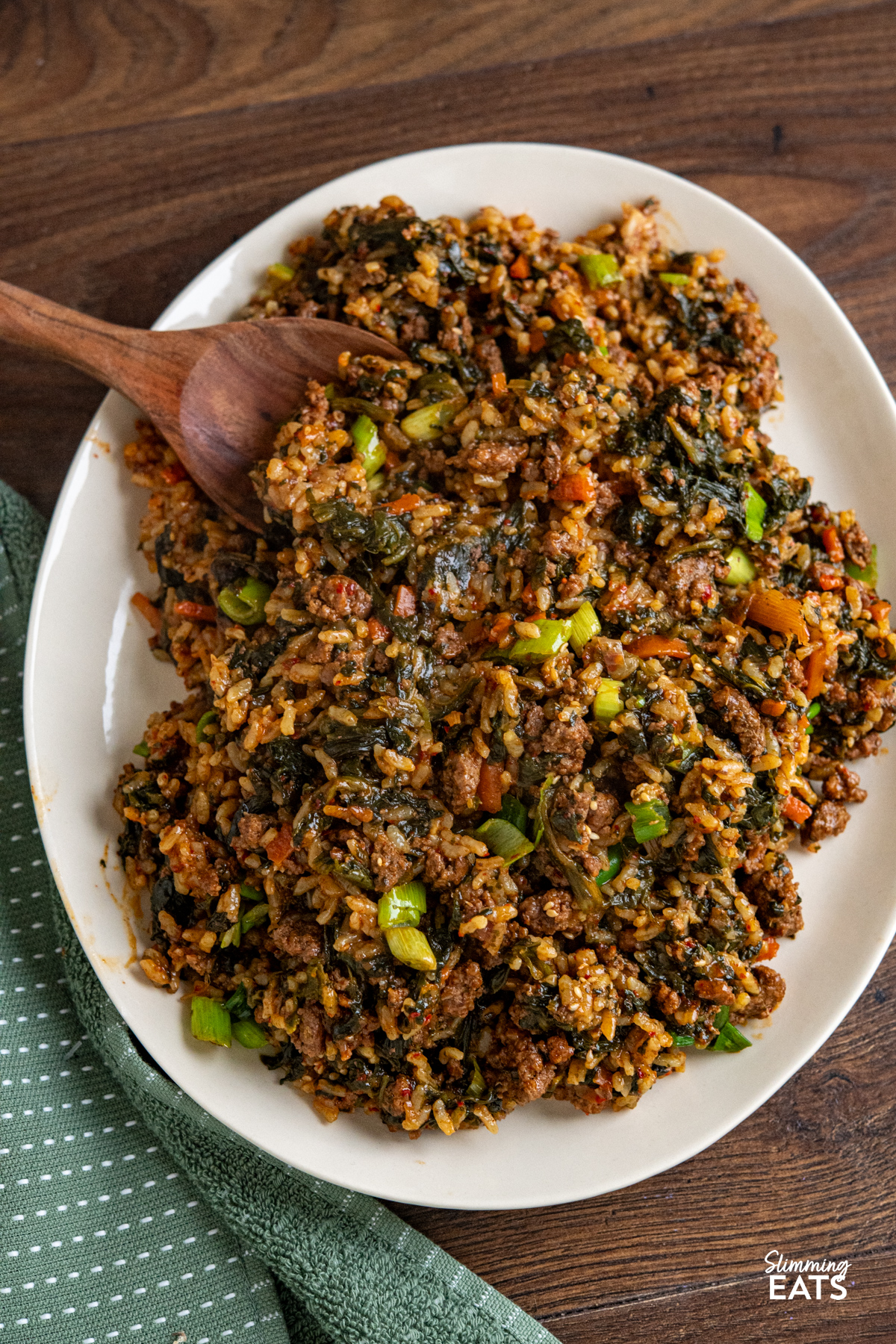
This hands-off recipe is perfect for busy weeknights, offering bold Korean-inspired flavours with a subtle balance of heat and sweetness. It's an easy way to bring a touch of something different to the dinner table without extra fuss.
Inspiration for Recipe
This recipe was inspired by the flavours and concept of a classic bibimbap rice bowl, where a mix of seasoned vegetables, protein, and rice come together in a single, satisfying dish. I've always loved Korean flavours and enjoy experimenting with Korean ingredients, from gochujang to gochugaru, to bring depth and balance to my cooking. I wanted to create a recipe with similar flavours that could be cooked entirely in the slow cooker, making it fuss-free but still packed with authentic Korean-inspired taste.
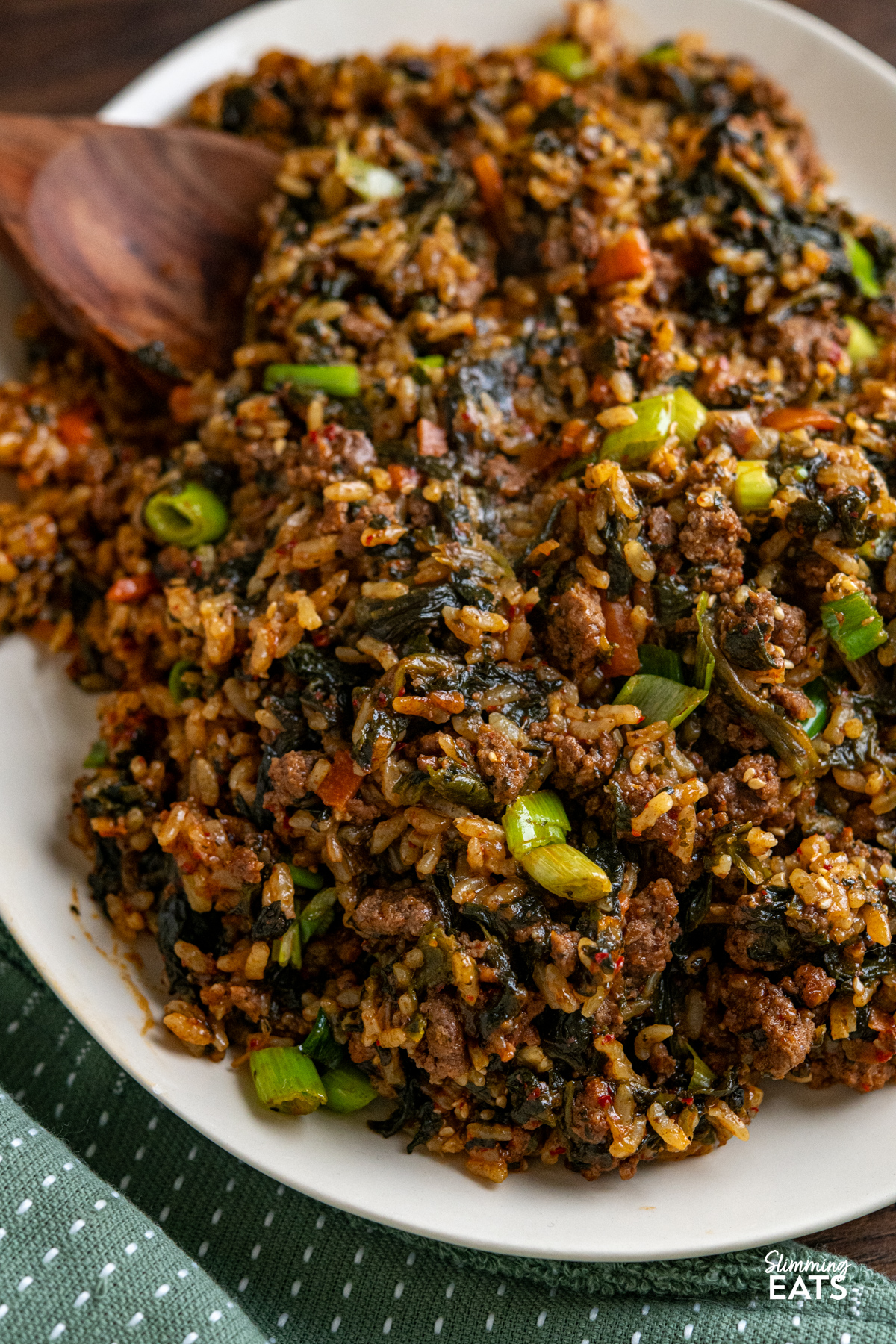
Calories in Slow Cooker Korean Beef Spinach Rice
This recipe serves 4 and is 475 calories per serving
If you're looking for more recipes by calories, you'll find plenty of options grouped by calorie range here: Slimming Eats Low Calorie Recipes
If you're following a calorie-controlled diet or a healthy eating plan, it's important to calculate your daily calorie needs using a reliable calorie calculator. The calorie counts provided are estimates and can vary depending on the exact ingredients and portion sizes you use. Using your own calculations helps ensure you're meeting your individual needs. A calorie calculator can help you make informed choices and stay on track with your goals.
See the recipe card for full nutritional estimation.
Ingredients Notes
To make this recipe you will need the following ingredients:
- Extra lean ground beef: A lower-fat option for a protein-rich base that keeps the dish lighter while still flavourful.
- Gochujang: A Korean red chilli paste that is sweet, spicy, and savoury, adding depth and a distinctive flavour to sauces.
- Gochugaru: Korean red chilli flakes, slightly smoky and mildly spicy, used to enhance heat and colour.
- Maple syrup: Adds a touch of natural sweetness to balance the spice from the gochujang and gochugaru.
- Soy sauce: Brings umami and saltiness, deepening the overall flavour of the dish.
- Sesame oil: A small amount adds a nutty aroma and rich flavour typical in Korean cooking.
- Ginger: Fresh ginger gives a subtle warmth and aromatic zing.
- Garlic: Adds savoury depth and a classic aromatic punch.
- Carrots: Provide natural sweetness and a bit of texture.
- Green onions (spring onions): Mild onion flavour, usually added as part of the cooking and for garnish.
- Chicken stock: A savoury liquid base that adds richness to the sauce and helps cook the rice. I like to use better than bouillon paste stock paste (you use 1 teaspoon per 1 cup (240ml of liquid). It's crucial to use the right ratio of stock cubes, powder or paste for the required amount of stock. Not all stocks are the same, and using the wrong amount can result in either a bland and watery broth or an overly salty stock.
- Medium-grain rice: Slightly plumper than long-grain rice, with a soft, slightly sticky texture that works well cooked in the same pot as the sauce.
- Frozen spinach: Convenient and easy to use, adds colour, nutrients, and a mild leafy flavour to the dish.
Once you've gathered all the ingredients and prepared them accordingly, you're all set to create this easy and delightful recipe.
See the recipe card for specific quantities and instructions
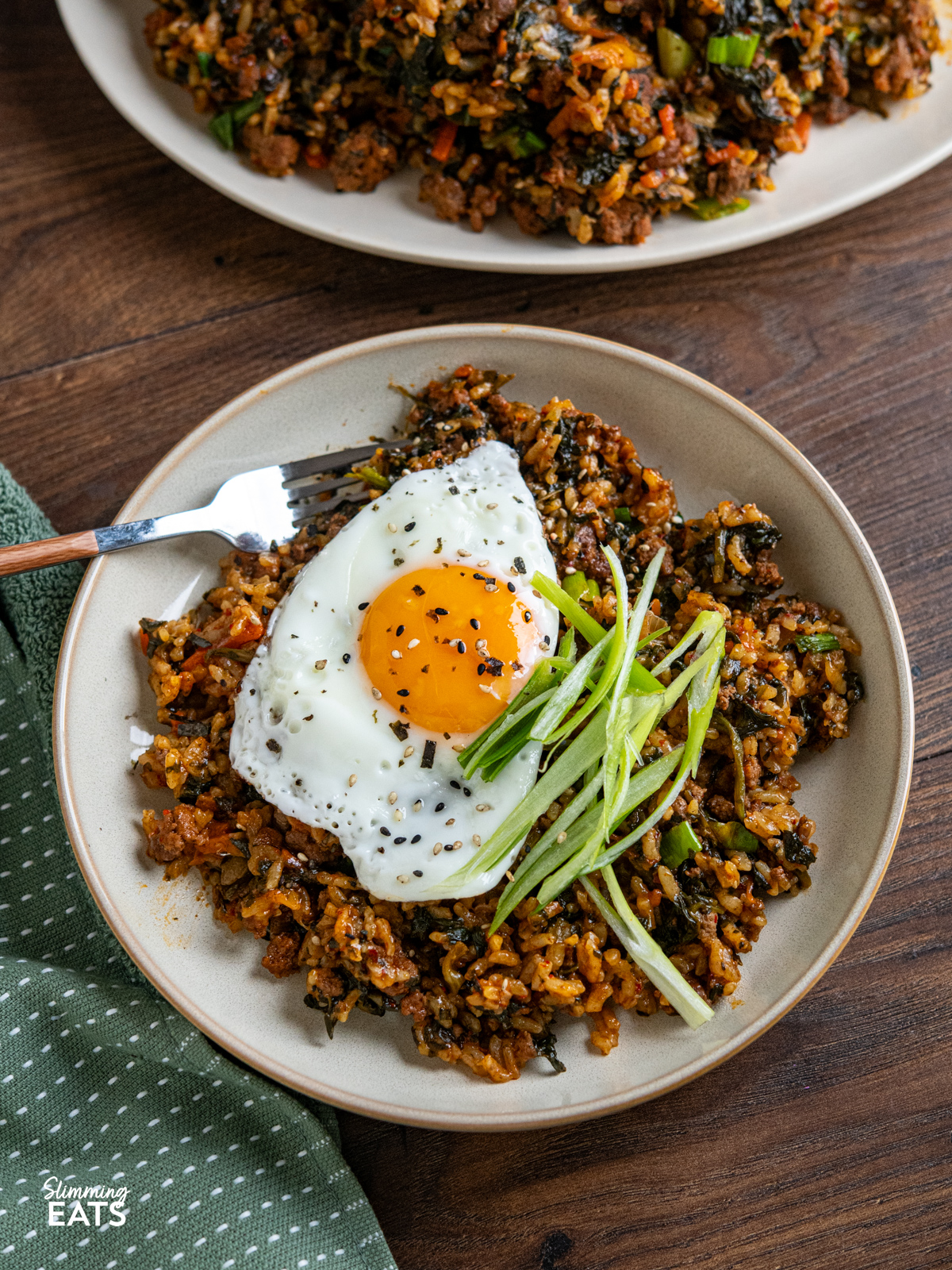
Variations and Substitutes
You can adapt this recipe to suit your taste or what you have on hand:
- Protein options: Swap the extra lean ground beef for ground turkey, chicken, or pork. You can also use diced chicken breast if preferred.
- Gochugaru substitute: If you don't have gochugaru, use a mix of mild chilli flakes and a pinch of smoked paprika for a similar colour and mild heat.
- Rice options: For medium-grain rice in the UK, look for rice labelled as "Calrose" or "medium grain" in supermarket or Asian food aisles. You can use basmati instead, but it may cook slightly differently, so check after 15 minutes and add extra stock or water if needed.
- Vegetable swaps: Feel free to swap in any other vegetables you like, keeping the overall ratio roughly the same to ensure it doesn't affect cooking time. Be aware that some vegetables may release extra water as they cook, which could alter the final consistency of the dish.
- Spinach alternatives: Frozen spinach works well, but you can also use fresh spinach, added in a few big handfuls.
- Maple Syrup swap: Maple syrup can be replaced with honey or light brown sugar if needed. You can also use a granulated sweetener if you prefer, but the sa
- Stock options: Chicken stock can be substituted with vegetable stock or low-sodium stock for a lighter version.
Tips for Slow Cooker Korean Beef Spinach Rice
Here's a handy list of tips to help you get the best results from your Slow Cooker Korean Beef with Spinach and Rice every time:
- Measure carefully: Slow cooker recipes rely on the right balance of ingredients. Using exact measurements helps ensure the cooking time, sauce consistency, and flavour aren't compromised.
- Brown the beef first: This adds extra flavour, but you can skip this step and just add everything straight into the slow cooker if you prefer. (except the rice and spinach of course). I have a sear function on my slow cooker, so it's easy to brown it first.
- Keep the lid on: Every time you lift it, heat escapes and can increase cooking time. Trust the slow cooker to do its job.
- Add the rice and spinach as the last step: They take around 45 minutes to cook. Check the rice towards the end, and if the liquid has been absorbed but it isn't fully cooked, add a little extra stock and cook for an approx 15 mins more mins.
- Adjust to taste: Once it's cooked, give it a taste and tweak the seasoning if needed. Spices can mellow slightly during cooking, so add a little more if the flavour feels flat.

Sides for Slow Cooker Korean Beef Spinach Rice
This meal is perfect on its own, but for that little extra, I like to serve it topped with a fried egg. Kimchi (check out my quick fresh kimchi recipe), Pickled radish and nori (김, gim) are also great side choices that complement the flavours beautifully.
You can also add some extra vegetables of your choice to bulk out your plate and make it even more satisfying.
If you want to take it even further, you can make an additional bibimbap-style sauce to drizzle over the top for extra flavour.
Simple Bibimbap Style Sauce
Mix together 3 tablespoons of gochujang, 1 tablespoon of maple syrup, ½ tablespoon of rice wine vinegar, and 1 crushed garlic clove.
More Slow Cooker Recipes
Looking for some more slow cooker recipes? Check out the following:
See more Slow Cooker Recipes →
or if you would like more recipe ideas - head on over to the FULL RECIPE INDEX where you will find over 900 delicious recipes with calories and you can search by meal type, ingredients, course, diet and more.
All recipes on Slimming Eats have estimated nutritional information for your convenience.
FAQ for Slow Cooker Korean Beef Spinach Rice
The recipe is best enjoyed fresh and is not suitable for freezing, as the texture and flavours can be affected after thawing.
Store any leftovers in an airtight container in the fridge for up to 2-3 days.
Reheat gently on the stove over low heat, adding a splash of stock or water to prevent it from getting too dry. You can also reheat in the microwave, stirring halfway through to ensure even heating.
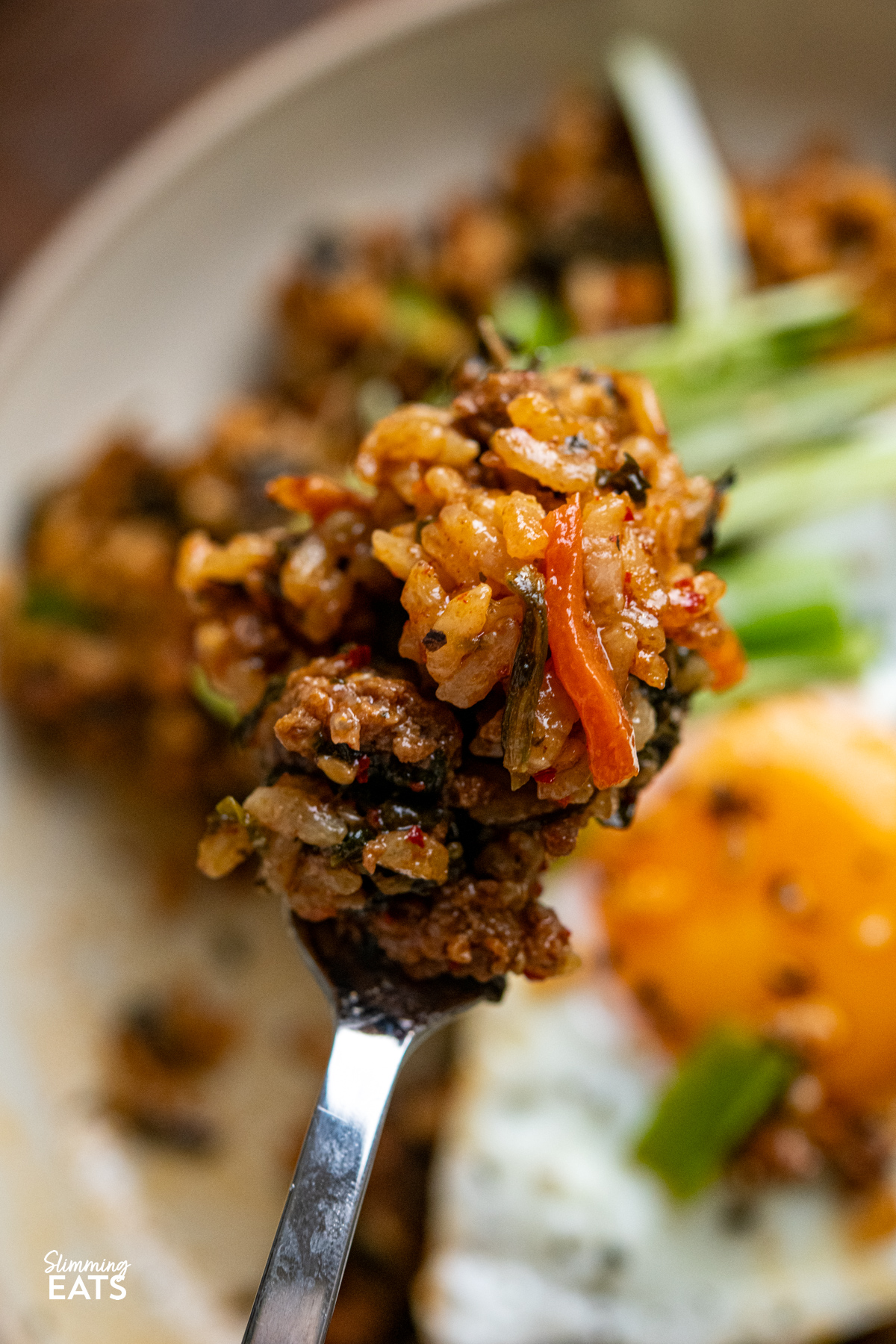
Let's Connect!!
Come and follow me on:
You can also Subscribe to Slimming Eats so that you never miss any new updates.
Need some support on your weight loss journey? Maybe you need advice or tips on a recipe, or just general meal ideas.
Come join the friendly and supportive Slimming Eats Community on Facebook.
If you try this recipe, let us know! Leave a comment, Rate It and Tag us in your Photos @SLIMMINGEATS on INSTAGRAM
Recipe Card

Slow Cooker Korean Beef Spinach Rice
This Slow Cooker Korean Beef with Spinach and Rice brings together savoury ground beef, gochujang, and tender rice all cooked in one pot for an easy, flavour-packed meal with minimal effort.
Ingredients
- 1lb (455g) of extra lean ground beef
- 3 tablespoons of gochujang
- 1 tablespoon of gochugaru
- 2 tablespoons of maple syrup
- ¼ cup (4 tablespoons) of light soy sauce
- 1 tablespoon of toasted sesame oil
- 1 teaspoon of fresh grated ginger root
- 4 cloves of garlic, minced
- 1 medium carrot, sliced into matchsticks
- 4 greens onions
- 2 cups (480ml) of chicken stock ( I use better than bouillion)
- 450g (15.9oz) bag of frozen spinach
- 7oz (200g) of medium grain rice, uncooked (I like to use kokuho or nishiki brand)
- salt and pepper
Instructions
- Remove the white part of the green onions and finely chop. Set aside the green tops for garnish.
- Add the ground beef to a frying pan over medium-high heat (or use the sear function on your slow cooker if it has one) and brown the beef until no longer pink.
- Transfer the beef to the slow cooker. Add the gochujang, gochugaru, maple syrup, soy sauce, sesame oil, ginger, garlic, carrot, the chopped white of the green onions, and chicken stock. Stir well to combine.
- Cover and cook on low for 4 hours.
- While the beef cooks, defrost the spinach and squeeze out any excess water.
- After 4 hours, add the rice and spinach to the slow cooker and stir to mix evenly.
- Switch to high and cook for about 45 minutes, or until the rice is tender and has absorbed the liquid. Check during cooking and add a little extra stock if needed.
- Taste and season with salt and black pepper as needed.
- Garnish with the reserved green onion and serve.
- For an extra touch, top with a fried egg before serving.
Notes
Please see below for full nutritional info and additional details about recipe:
- Calories - scroll down to nutritional info box
- WW Points and other Slimming or Weight Loss programs - due to plans regularly changing and updating, we recommend calculating with the official tools you get as a member to those plans to ensure accuracy of values.
- Dairy Free Friendly
- Tip: Once it’s cooked, give it a taste and tweak the seasoning if needed. The gochujang and other spices can mellow slightly during cooking, so add a little more if the flavour feels flat.
Please do not copy or paste full recipes or post screenshots of any content from Slimming Eats to any social media or website, as it is strictly prohibited.
All images and content on Slimming Eats are copyright protected.
If you wish to share this recipe, then please do so by using the share buttons provided at top of this post.
Nutritional information etc are an estimate and are to be used for informational purposes only. Ingredients can vary in values from brand to brand and therefore it would be impossible to give accurate information. It is always advised that you calculate values yourself by the ingredients you use and the tools provided to you as a member of the programme you are following.
It is the responsibility of the Reader to assure the products or ingredients they use in any recipes from Slimming Eats are allergen-free (gluten-free, egg-free, soy-free and/or dairy-free, for example). Slimming Eats assumes no liability for inaccuracies or misstatement about products, opinions or comments on this site.
Check Legal section, for Full Disclaimer, Disclosure and Privacy Policy.
Recommended Products
As an Amazon Associate and member of other affiliate programs, I earn from qualifying purchases.
Nutrition Information
Yield 4 Serving Size 1 SERVINGAmount Per Serving Calories 474Total Fat 10gSaturated Fat 3gUnsaturated Fat 29gCholesterol 215mgSodium 2059mgCarbohydrates 65gFiber 4gSugar 13gProtein 33g
Nutritional information and values etc are an estimate and is to be used for informational purposes only. Ingredients can vary greatly from brand to brand and therefore it would be impossible to give accurate information. It is always advised that you calculate by the ingredients you use.


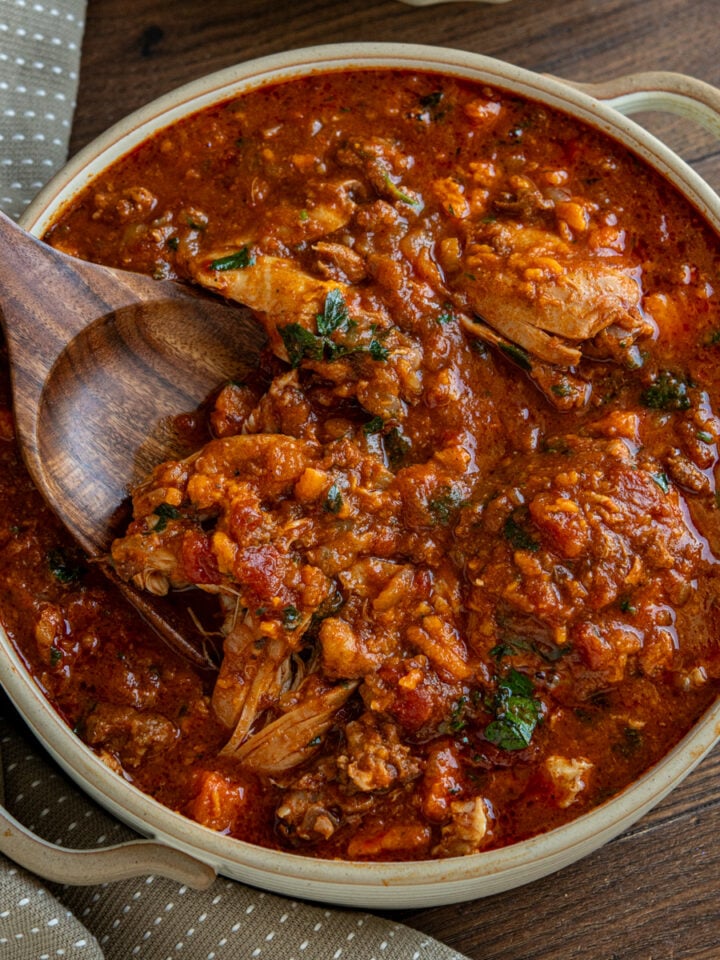
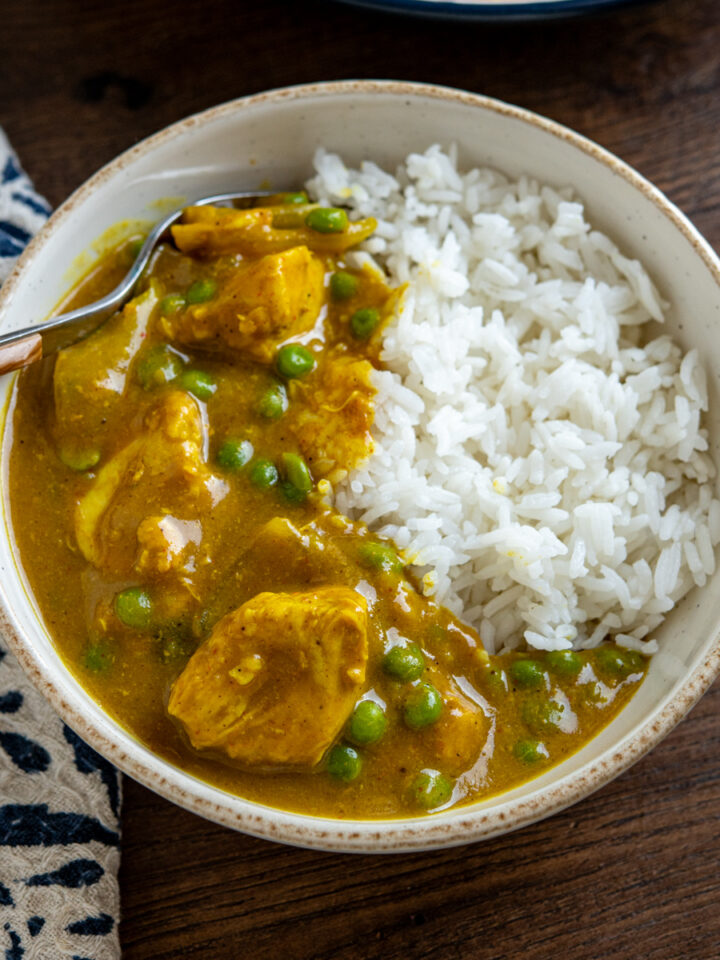
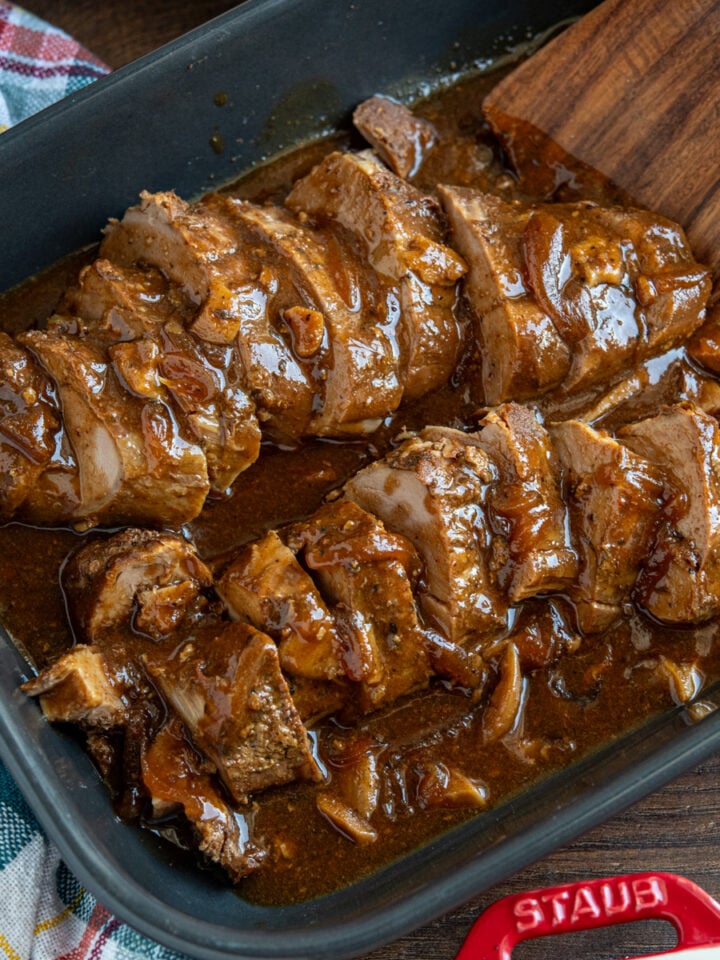

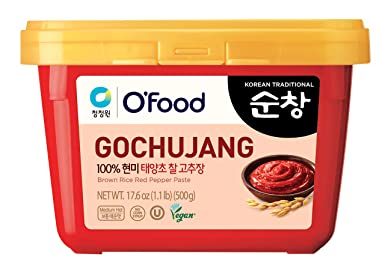



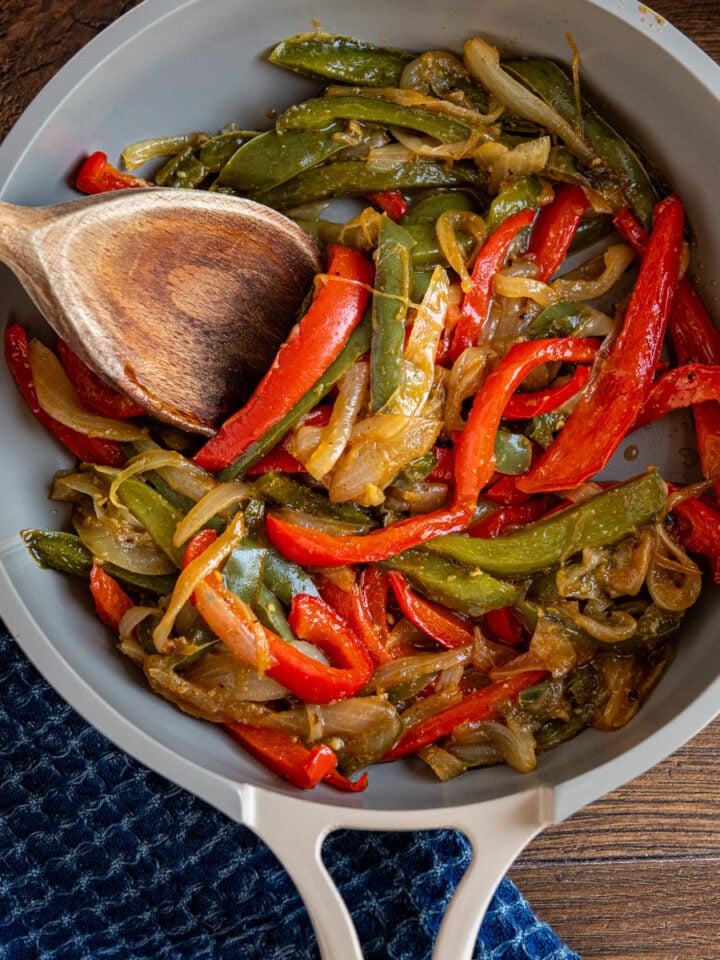

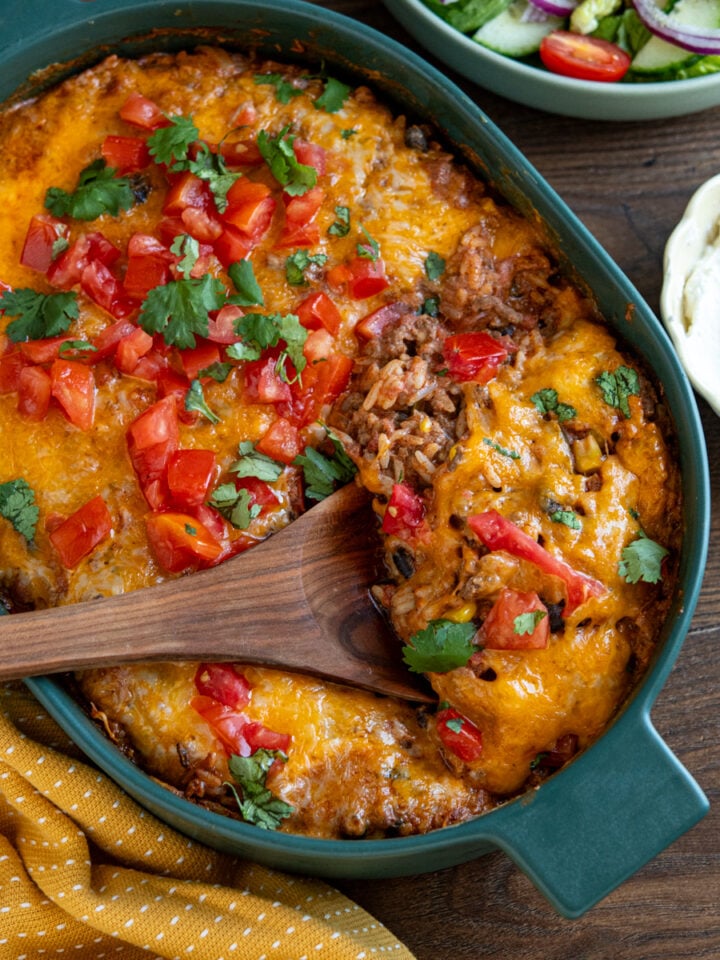
Melanie D. says
Made this tonight and wow—absolutely delicious! 🌶️✨ It had the perfect kick of heat with just a whisper of sweetness in the background. My partner devoured it, so it’s definitely going into our repeat-recipe rotation!
Siobhan (Slimming Eats) says
So glad to hear you enjoyed it. Thanks so much for leaving a comment ❤️